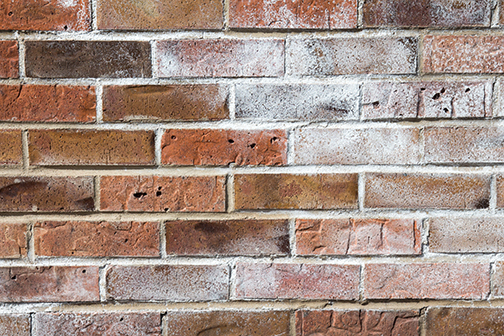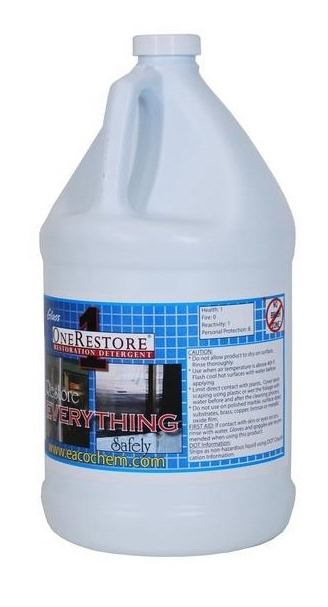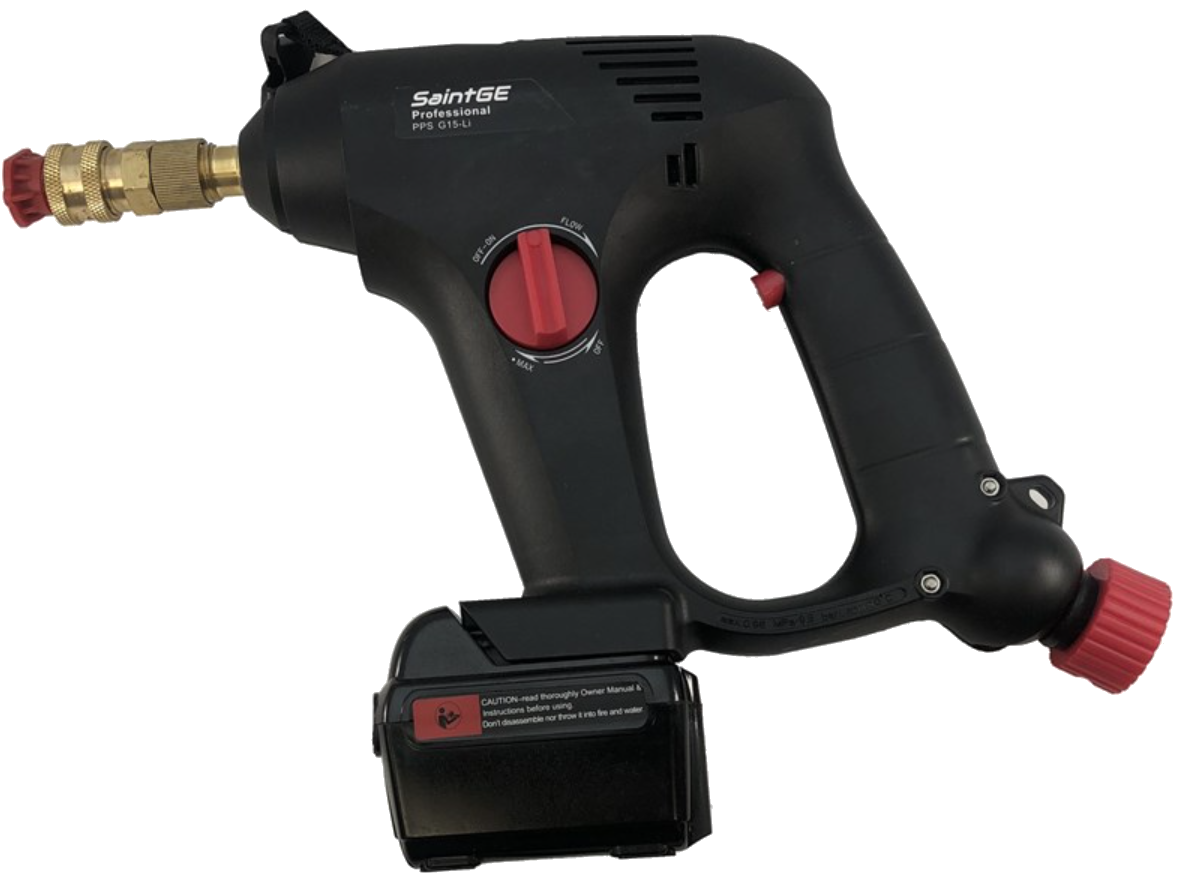Is it Efflorescence or Something Else?

Efflorescence is a white, chalky deposit that is caused by excessive moisture in a masonry wall. With new construction, efflorescence sometimes develops what’s sometimes called “new building bloom” – which is efflorescence that occurs during the normal drying process. Efflorescence forms when moisture in the bricks brings soluble salts to the surface, resulting in white salt deposits. This “new building bloom” efflorescence will usually weather off on its own.
Buildings with recurring efflorescence indicate there’s moisture getting into the bricks somehow, such as through cracks in the bricks or mortar joints, missing caulking, or even clogged gutters that aren’t working properly. If the problem is not corrected, the efflorescence will come back.
How can I tell if it’s efflorescence?
Test one: Wet the surface. If it disappears when wet then comes back when dry, it’s probably efflorescence -- but not always!
Test two: wet your fingertip, rub it on the wall, then touch your fingertip to your tongue. If it tastes salty, it’s efflorescence. (This is probably not a great option, especially in a post-COVID world.)
If it's efflorescence, you can learn more about how to remove it here.
What other types of white stains can be on brick and concrete?
1. Calcium stains are also white, but they can have a thicker, crustier appearance. Like efflorescence, calcium stains result from excess water passing through the mortar joints. When the water evaporates, it can leave white calcium deposits behind. Calcium stains come in different levels – from powdery to mild or moderate deposits, to severe.
2. Hard-water stains don't just cause problems on glass. When high-mineral (hard) water settles on the surface of bricks then evaporates, it can leave behind a white haze. Like efflorescence, hard water stains may disappear when the brick is wet, which can make it a little harder to determine what the stain is. If F9 Efflo does not fix the problem, it may be a hard-water stain and require a specialized product, such as Eaco Chem One Restore, to remove the white stain.
Eaco Chem One Restore
OneRestore is a breakthrough detergent that provides remarkable versatility, cleaning power and safety all in one product. It is capable of removing the deepest water hardness and pollution stains, and mineral and metal oxide stains from a wide variety of surfaces -- including bricks.
It is also an effective coating remover and safely cleans glass and anodized aluminum when used as directed.
Hydrochloric Acid based: Make sure you wear gloves with any type of harsher acid.
4. White Scum (calcium silicate) is an uneven white (or gray) stain that looks a lot like efflorescence but will not disappear during the water test. It usually results from residue left during washing -- especially if muriatic acid is used without pre-wetting the brick or thoroughly rinsing the acid off. The use of acid can dissolve the cement mortar, which then leaves residue on the brick face.
5. Failing sealers can look white. Removing the sealer will depend on the type of sealer used.
We Recommend Applying with the ProTool Power Sprayer
The ProTool Power Sprayer is designed to handle almost all chemicals, and is bleach and acid resistant. (Note: you must rinse the sprayer after use.) Each sprayer comes in a convenient carrying case, complete with a number of accessories to make your job easy.
Versatile, lightweight, and easy-to-use, the ProTool Power Sprayer is the perfect option for a number of applications, including:
- Quick Demos
- Spot Treatments
- Pre-Treating for rust/battery acid, calcium/efflorescence, degreasing, or other stains
- Hard-to-Reach areas, like corners or under awnings, etc.
- Small-to-Medium Sized Jobs of All Kinds
- Any project where you want an alternative to continuous pumping.



